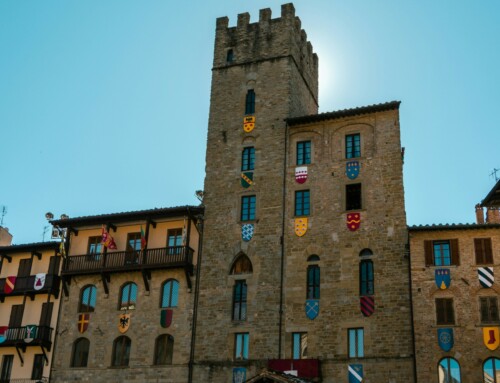The Abbey of Saints Flora and Lucilla

Arezzo, the heart of Tuscany, hides such jewels as the Abbey of Saints Flora and Lucilla, rich in history, Renaissance art and Gothic architecture. Moved within the city walls in 1196, the Gothic church began to rise in 1278, with subsequent modernizations in the 15th century, including the cloister by Giuliano da Maiano. The interior of the Badia is a Renaissance specimen, housing works by Bartolomeo della Gatta and Andrea Pozzo. Nearby is the Poggio del Drago B&B, ideal for exploring this historical and artistic marvel of Arezzo, offering an authentic stay in the Tuscan countryside.
Discover the beauty of the Basilica of Saints Flora and Lucilla!
Looking for a destination for your next cultural trip? Arezzo, in the heart of Tuscany, hides unexpected treasures within its historic walls. Hey, don’t scroll right away! I promise this won’t be your usual boring travel guide. Instead, I will take you on a journey filled with anecdotes, art, and maybe a few laughs. So, have you ever heard of the Abbey of Saints Flora and Lucilla? No? Then read on! An ancient monastery, stories of saints, Gothic makeovers and artwork by Renaissance masters are waiting for you. And all, just minutes away from Poggio del Drago Bed and Breakfast, your haven in the Tuscan countryside. Interesting, isn’t it? Read on!
The Abbey of Saints Flora and Lucilla: the origins
Origins and Transfers
The Abbey of Saints Flora and Lucilla has ancient origins. It houses the relics of Saints Flora and Lucilla, brought to Arezzo in the 9th century. Then, in 1196, the City of Arezzo decided to destroy the previous monastery near Olmo and ordered the monks to move within the walls to a new area.
Construction and Modernizations
Construction of a Gothic-style church began around 1278. In 1315 the monastery was also remade. But the surprises do not end there! In the 15th century, beginning in 1440, modernization work began, culminating in 1489 with the construction of the cloister designed by Giuliano da Maiano.
The Beauties of the Abbey
The Façade
The facade of the Badia is a history lesson in stone, showing the two main phases of construction: a Gothic part on the right and the late 16th-century extension on the left. So, a true architectural gem!
Inside
The interior is a masterpiece of design, among the most important achievements of Cosimo I’s time. Unique halls, communicating chapels, ribbed and barrel vaults, each element is a treasure to be discovered. Ultimately, an excellent example of Renaissance art.
Obs of Art
Inside the Abbey, you will find works such as the fresco with St. Lawrence by Bartolomeo della Gatta, the painted Cross by Segna di Bonaventura, and the canvas of the Mock Dome by Andrea Pozzo. So, an art museum in a church!
Poggio del Drago: Your Refuge Near the Abbey
.
Do you wish to explore these historic wonders? Poggio del Drago, located in an old stone farmhouse, is your perfect retreat in the Tuscan countryside. Just a short distance from the city of Arezzo, it offers a warm welcome and the opportunity to enjoy the natural and artistic beauty of the region. The authentic atmosphere awaits you for an unforgettable stay!
The Abbey of Saints Flora and Lucilla: an unmissable stop!”
So, are you ready for a journey among the historical and artistic beauties of Arezzo? The Abbey of Saints Flora and Lucilla opens the door to a world full of stories, works of art and magnificent architecture. And Poggio del Drago, your retreat in the Tuscan countryside, is the ideal starting point for this adventure. Don’t miss the opportunity to discover one of Arezzo’s hidden treasures! Book your visit now!




